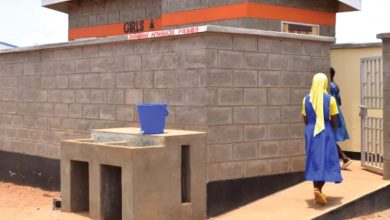Communities to curb siltation on power generation
 Two things are common in Malawi, especially at night: blackouts and the sound of generators in various workplaces. Power interruptions continue to affect both private and public sectors including households.
Two things are common in Malawi, especially at night: blackouts and the sound of generators in various workplaces. Power interruptions continue to affect both private and public sectors including households.
Apart from the usual lack of capacity to supply the growing demand for electricity, the frequent power failure has been attributed to weeds and siltation in Escom’s hydro power stations.
Latest findings by Malawi Business Climate Survey (MBCS) reveal that cuts in power transmission have contributed to losses beyond the minimum acceptable level of seven percent.
The Millennium Challenge Account-Malawi (MCA-M) estimates that the country is losing $215.6 million (about K38.8 billion) a year due to the power outages. With transmission and distribution losses pegged at about 20 percent, according to Escom, the Consumers Association of Malawi says poor Malawians bear the cost of losses through hiked tariffs.
Tedzani Hydro Power Station is one of the affected apart from Nkula and Kapichira.Visits to Tedzani, which generates close to 90 megawatts of power, proved that in recent years, there has been a dramatic increase in the amount of floating aquatic weeds on the river to the point that electricity generation has been greatly affected, especially during the rainy season.
However, the intake was previously provided with a course-screen that runs across the pond to catch and divert any oncoming trash and weeds. The equipment suffered damage at its base foundations and some screens got washed away during the 2001 similar operation.
Escom power stations operated without any major environmental problems until 1990s when there was an increase of floating aquatic weeds and debris in addition to silt deposition at the intake ponds. Knowing that they already use equipment to deal with weeds and silt, Escom officials think it is high time they engaged communities in sensitisation meetings at Tedzani to stop cultivating along the river banks.
Public relations manager, Kitty Chingota confirmed this to journalists during a recent tour to the site.
She says communities are crucial to the exercises since farming along the river has side effects on their head-ponds.
“Soils that are being eroded are full of nutrients, in addition to this, almost all farmers use artificial fertilisers which are eroded together with top soils before finding their way into the river,” she says.
The awareness is expected to involve agricultural officials and the Forestry Department.
In a paper presented during the International Conference on Hydro Power in Malawi held in Sri Lanka three years ago, Escom officials alluded that when these soils and their nutrients are deposited into the river, they provide necessary nutrients to the aquatic plants and they then grow and multiply.
The paper states that the weeds, among others, comprise water hyacinth known as Namasupuni, Red water fern, water lettuce and elephant grass
Engineers say as aquatic weeds float, the river currents then cut them off from the main firm grounds of the river banks and they are carried away downstream which affects power generation.
Chingota states that Escom’s priority is to ensure that Malawians have power, hence the decision to work on the machines.
“Silt and aquatic weeds are a major threat to power generation because most of the equipment cannot pump water as a result of the two problems,” says Chingota.
Rex Muhome, head of Tedzani Hydro Power Station says through flooding, crops are washed away and as such, weeds are emptied into the river while forming silt.
During the tour, it was observed that the screens are cleaned by trash rakes, but at certain instances, the trash rakes have been overcome by the inflow of the weeds which could lead to the shutdown of the whole power station to clear the weeds at the intake.
It is against this background that during the Easter holidays, Escom repairs equipment from the head-ponds.
“We lose revenue once we halt operations but such repair works on Easter holidays are crucial to us as Escom. Just this year, we first closed Tedzani on Friday and Sunday and then Nkula later to ensure that most parts still have power,” said Chingota.
Muhome, head of the power station hints that the shutting down of production at the site is routine considering that on Easter holidays, not many companies are in production.”In this project of maintaining and removing weeds and silt, we always target all hydro power stations but in phases. However, communities have got to be sensitised having observed serious repercussions on our machines,” Muhome says.
He says the civic education for communities not to cultivate along the river banks is likely to start soon. “We are working on modalities for the whole project for it to be a success,” Muhome says. Such decisions by Escom to involve communities would ensure that power generations projections by the (MCA-M) for 2010, 2015 and 2020 estimated at 408MW, 603MW and 829MW are achieved inclusive of new power plants establishments.
Statistics by the power utility company and economists vindicate that the concealed demand for power in Malawi for about 180 000 clients is about 300MW. However, the available power generation capacity as at now is 266MW not in line with the overgrowing demand of power.
Up to 98 percent of electricity is obtained from power plants located on the Shire River in Chikhwawa, South of Malawi, except for Wovwe Mini Hydro Plant in Karonga. Escom authorities point out that the country’s hydro potential is estimated at over 1 000MW
.




